
Water Mint, Mentha aquatica – A Not So Wild Tea
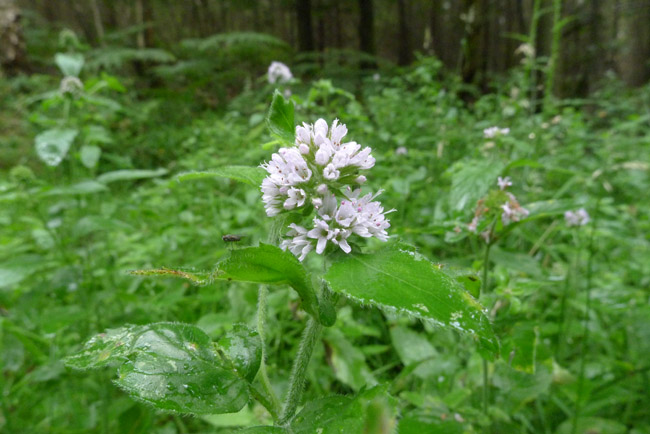
Water Mint, Mentha aquatica has a wide distribution across Europe (except the far north), Asia and Africa. It is the most common of the wild mints in the British Isles but is much less frequent in Scotland than elsewhere. It has a number of food and medicinal uses and is therefore a useful plant to know for foragers and those interested in bushcraft and survival.
Water Mint, as its name suggests, likes to grow in very damp ground and, unlike some similar mints such as Corn Mint, Mentha arvensis, will grow in ground submerged in fresh water. Hence, Water Mint is commonly found on the banks of rivers and ponds, on the edge of and in the shallows of streams, around and within marshes, fens and wet woodland. Where it grows it is often found in quantity, particularly in shady, damp woodland. If you inadvertently crush underfoot even a lone plant, you will certainly smell its fresh minty aroma.
Apart from its easily recognisable smell, Mentha aquatica shares some common traits with other mints. Like many members of the family Lamiaceae, Water Mint has a stem with square cross-section, and opposite pairs of leaves alternating at 90 degrees to the pair above or below on the stem.
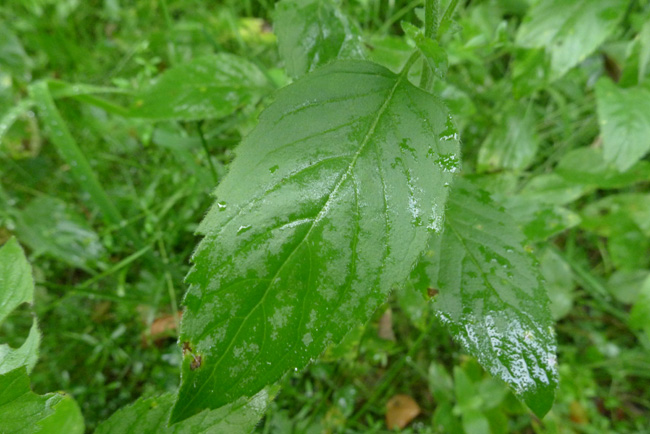
The leaves themselves are oval, toothed and are attached to the stem by a short stalk. The leaves typically have 4-6 arched veins. The stems and leaves can show some red-purple colouration, particularly earlier in the year. The plant grows erect but the height of the plant varies considerably from 15 to 60 cm (6 to 24 inches). The upright stems can range from being almost hairless to covered in soft, downy hairs. The leaf margins can also be hairy.
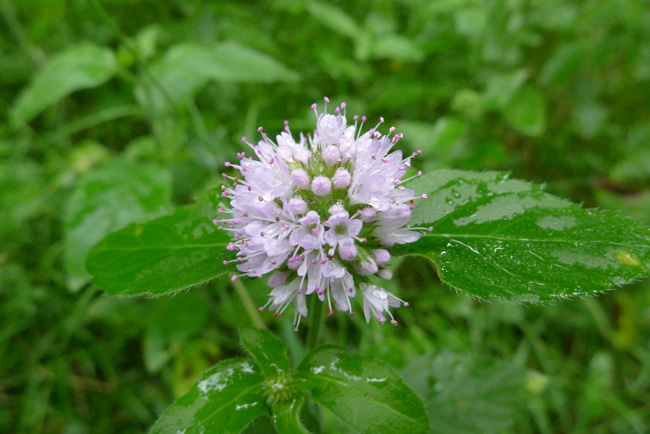
Water Mint flowers in mid to late summer (July to October in the UK) and the species is characterised by having most of its flowers towards the top of the plant. The flowers are pink-lilac in colour, tiny and clustered in dense whorls. In addition to flowers clustered around the joint where leaf stems and main stem meet (the leaf axils), water mint has a terminal whorl of flowers at the top of its stem (unlike Mentha arvensis which has only axillary whorls).
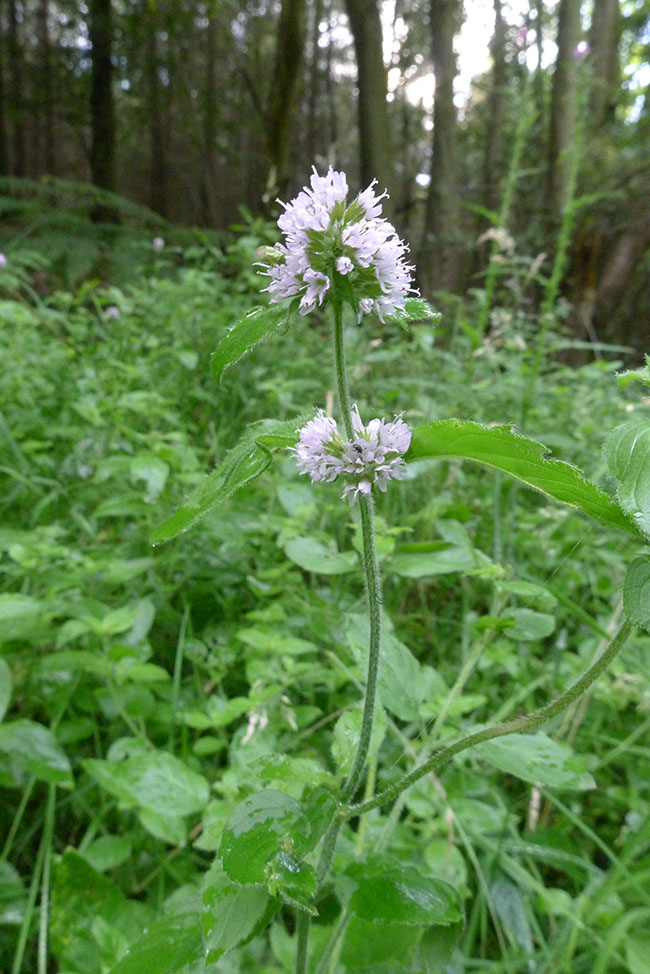
Water Mint contains a lot less menthol than Peppermint, Mentha x piperata, but it has been used in a similar way to calm digestive disorders, flatulence and nausea. Indeed on one occasion when I had a very sore stomach with food poisoning, I used Mentha aquatica to sooth the stomach cramps I was suffering.
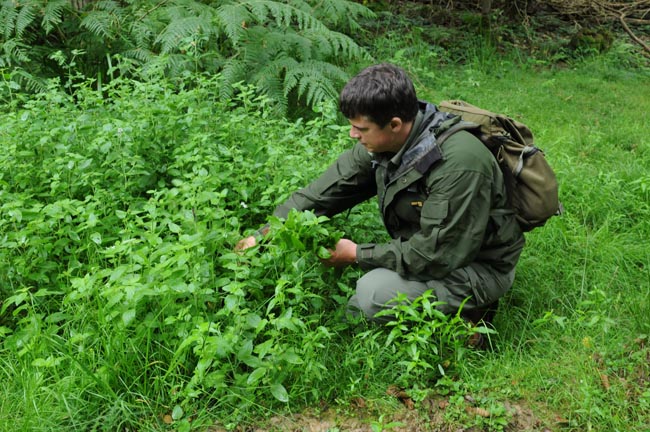
Whether you are using it to settle your stomach or just in need of a refreshing drink, fresh Water Mint makes a very pleasant and flavoursome tea. To make a couple of large mugs of tea I generally collect a medium-sized bunch of water mint from the upper parts of plants. I pull off the leaves and put a handful in each mug. Then cover the leaves with water that has just boiled. By the time the drink is cool enough to drink without scalding your mouth, the leaves will have steeped sufficiently to provide a good flavour. If you have a sweet tooth, you can always add a bit of sugar if you have some.
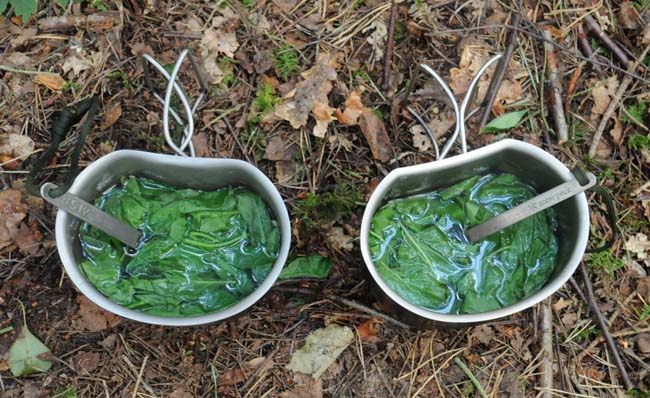
In addition to infusing mint leaves to make a tea, you can also use them to flavour other foods. Cous cous makes a good trail food – light and easily rehydrated – why not add some shredded mint leaves for freshness? If you are picking berries, particularly raspberries, Rubus idaeus, add some small mint leaves for a delicious forager’s dessert. For the day-hikers heading home for roast lamb, making your own mint sauce is very easy too…
Best Practice while Foraging
Please read the BSBI’s Code of Conduct for the Conservation and Enjoyment of Wild Plants for guidance on the best practice (and UK laws) relating to foraging for wild plant foods.
Disclaimer
This article is meant only as a guide and is largely a record of my recent forages. It is not a complete treatment of all edible plants that might be available. Nor does it provide a complete treatment of all poisonous plants that may also be present in the habitat where you find the above-mentioned plants. If you want to learn more about plant identification you should invest in some good field guides. The safest way to learn about edible wild plants is for someone who already has the knowledge to show you in person. Any foraging you do on your own is at your own risk.
The most important thing to remember when identifying wild foods is:
IF IN DOUBT, LEAVE IT OUT!
Improve Your Tree and Plant Identification Skills
Would you like to improve your ability to identify useful trees and plants? I offer an online tree and plant identification course, which flows through the seasons. Find out more about the next available course by clicking the following link: Paul Kirtley’s Tree and Plant Identification Masterclass
Recommended Books for Further Reading
Collins Wild Flower GuideCollins Complete (Photographic) Guide To Wild FlowersThe Wild Flower KeyThe Forager HandbookPoisonous Plants and Fungi
Related Articles on This Website
Foraging for Early Spring Greens: Some to Eat, Some to Avoid…
Yellow Archangel, Lamiastrum Galeobdolon
Primrose, Primula vulgaris: Wild food?
12 Easy-to-Forage European Plants For Spring and Early Summer

8 thoughts on “Water Mint, Mentha aquatica – A Not So Wild Tea”
Mint has to be one of my favourite herbs. Sugary mint tea takes me back to my honeymoon in Morocco!
I am sat here having read you article being able to taste the mint, going to have to go on a hunt tomorrow!
Good to see a feature on Watermint Paul. It does indeed make a refreshing ‘tea’ and I recall being very happy to see you appear bearing a big bunch of it on an unexpected overnight camp in Wales last year. On that occasion in we sweetened our brew with some smashed-up Kendall mintcake which gave us a fantastic boost. Finding something to make a brew from is very comforting when the tables turn on you, and fits in well with the ‘STOP’ drill, affording a few minutes of calm in which to get your head together and from which you emerge rehydrated and ready to take on the challenge in front of you in the knowledge that you’ve already improved your situation. I’ve since found watermint growing alongside a stream in the woodland where I volunteer and it is a welcome alternative to our standard brew kit during breaks.
Hi Steve
Nice to hear from you. It’s a really good point you make with respect to STOP. Having a brew often gives that breathing space to be able to Stop, Think, Observe and Plan. Some people will also use the time it takes to smoke a cigarette as thinking time. You only need a few minutes of calming down and clearing your head to be much more effective going forward. You use the word ‘comforting’ and I think this is a good one.
I remember your super-mint tea of water mint and Kendal mint cake 🙂 You all seemed very glad to have had it.
All the best
Paul
Hi paul
Didn’t know about the medicinal use for this plant. Especially the flatulence. Like i say, never begrudge yourself a little toot. What you loose in dignity you gain in comfort.:)
Keep up the good work
Adrian
True but I’ve found it very settling during more severe upsets! 😉
I found a tall, leggy, unlabeled mint at the garden centre with purplish red leaves. The soil in the pot was sodden – I’m wondering if it’s water mint…
That or it’s a very reddish variety of Spearmint / peppermint! (Nitrogen or Phosphorus deficiency perhaps).
I’m going to try to grow some in a glass of water and see what it does…
Not that it’s a particularly good test since spearmint will grow in a glass of water also…
I have several mint varieties in pots in my kitchen, and we have spearmint growing wild all over the countryside here (Mediterranean). I haven’t seen any wild water mint – it may be too hot/dry here for it. Most of the wild mints here grow in run offs that are sodden or submerged in winter and bone dry in summer so they are both flood and drought resistant 🙂
Could I order some Menta Aquatica Lamiaceae from you?
Thanks
Robin Baird-Smith